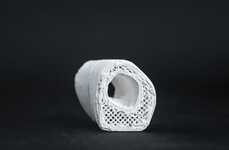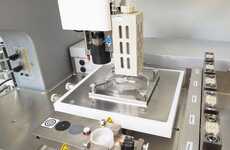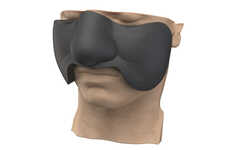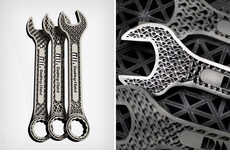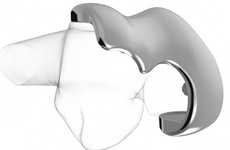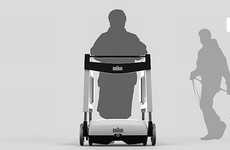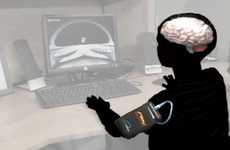
LayerWise & Research Institute Biomed Create 3D-Printed Jaw for 83-Year-Old
Katherinev123 — February 7, 2012 — Tech
An 83-year-old woman has had her lower jaw replaced with a 3D-printed jaw! Replacing the woman's original infected jaw, the new artificial and customized mandible was created by metal additive manufacturer LayerWise using a method developed by Hasselt University's Research Institute Biomed in Belgium.
Since typical reconstructive surgery and jaw implants take a long time and come with high risk, the 3D-printed jaw provides an amazing alternative. Made of powdered titanium, this 107-gram artificial jaw was printed in layers and then covered in a bioceramic coating. The surgery was performed in the Sittard-Geleen hospital in the Netherlands, and the woman was able to speak and swallow the very next day. According to Wired UK, while traditional implants can take up to two days to be ready, the 3D-printed jaw was in the patient's jaw after only four hours. Watch the video here to learn more about this incredible innovation.
Since typical reconstructive surgery and jaw implants take a long time and come with high risk, the 3D-printed jaw provides an amazing alternative. Made of powdered titanium, this 107-gram artificial jaw was printed in layers and then covered in a bioceramic coating. The surgery was performed in the Sittard-Geleen hospital in the Netherlands, and the woman was able to speak and swallow the very next day. According to Wired UK, while traditional implants can take up to two days to be ready, the 3D-printed jaw was in the patient's jaw after only four hours. Watch the video here to learn more about this incredible innovation.
Trend Themes
1. Customized 3d-printing - The development of customized 3D-printing technology for prosthetic limbs and organs provides disruptive innovation opportunities in the biotechnology and medical sector.
2. Metal Additive Manufacturing - The use of metal additive manufacturing in the production of prosthetic body parts presents disruptive innovation opportunities for the manufacturing and production industry.
3. Bioceramic Coating - The development of bioceramic coatings for 3D-printed parts presents disruptive innovation opportunities in the materials science and biomedical engineering industry.
Industry Implications
1. Biotechnology - Customized 3D-printing technology for prosthetic limbs and organs presents innovation opportunities in the biotechnology industry.
2. Medical - The use of 3D-printing technology to produce prosthetic body parts presents innovation opportunities in the medical industry.
3. Manufacturing - The use of metal additive manufacturing in the production of prosthetic body parts present innovation opportunities in the manufacturing industry.
1.8
Score
Popularity
Activity
Freshness

